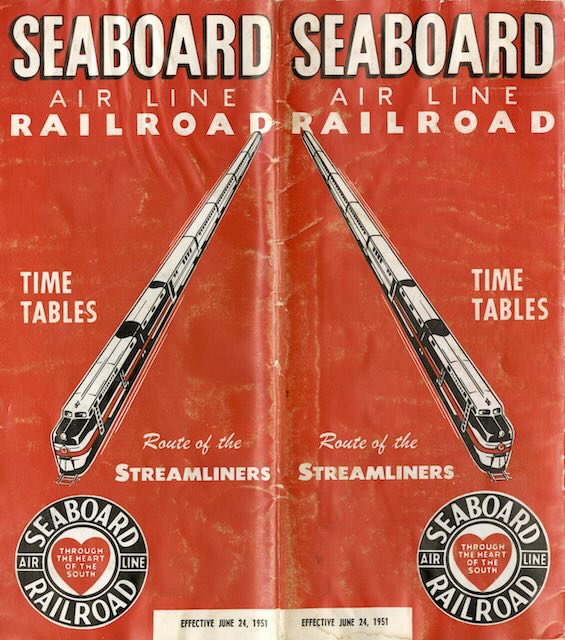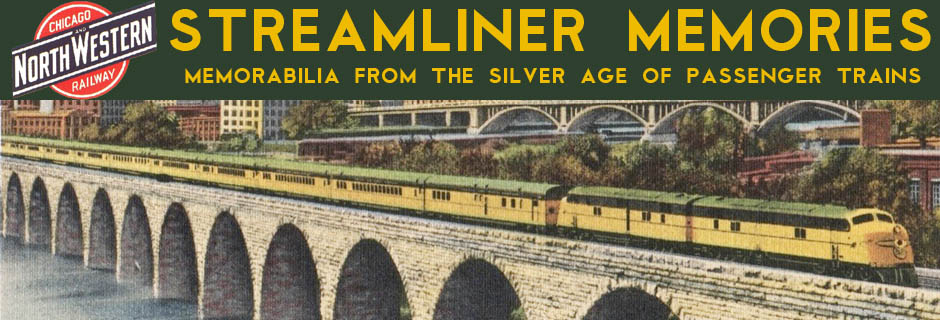Unlike its rival, the Atlantic Coast Line, Seaboard didn’t have financial ties with railroads that connected to the Midwest. As a result, most of its passenger trains were concentrated in the New York-Florida market. This also meant its timetables were shorter: only 28 pages in 1951 compared with ACL’s 36 pages several years later.
 Click image to download a 14.9-MB PDF of this 28-page timetable.
Click image to download a 14.9-MB PDF of this 28-page timetable.
Fortunately for Seaboard, New York-Florida was the most profitable long-distance passenger-train market in the country and there was room for both ACL and SAL. Seaboard actually had an advantage in this market as its lines went down both coasts of Florida, while ACL’s only went on the West Coast and had to depend on Florida East Coast Railway to get its passengers to Miami.
In 1951, Seaboard had four trains a day from the Northeast to Florida: the Silver Star, Silver Meteor, and Palmland, all of which started in New York, and the Sunland, which started in Washington. All except the Sunland also split at Jacksonville with part going to Tampa and part to Miami.
The one major train that Seaboard shared with another railroad was the New Orleans-Jacksonville Gulf Wind, which went over the L&N from New Orleans to Pensacola and Seaboard from there to Jacksonville. Apparently, ACL didn’t have a good line between Pensacola and Jacksonville.
Unlike ACL, Seaboard was also able to offer service between Florida’s West Coast (Tampa and St. Petersburg) and its East Coast (West Palm Beach, Fort Lauderdale, and Miami). Seaboard also had three trains a day between New York and Atlanta, two of which went on to Birmingham. These included the Silver Comet, the coach-only Cotton Blossom, and an unnamed local train that only went as far as Atlanta.
Despite all of these trains, Seaboard had plenty of room for ads in this 28-page timetable. The cover shown above is the back cover; the timetable not only had an ad for its major trains on the front cover, it had an unusual two-page spread on pages 2 and 3 advertising the railroad’s “silver streamliners.” Two more full-page ads that are sort-of connected are on the inside back cover and its facing page.
Although this was more than ten years later, the repeated references to “silver” were because Seaboard didn’t want anyone to forget that it was the first railroad to have New York-Florida streamliners in 1939. The Silver Meteor was inaugurated on February 2, 1939, while the Champion didn’t start running until December 1, 1939. Both trains were built by Budd and therefore were silvery stainless steel.
